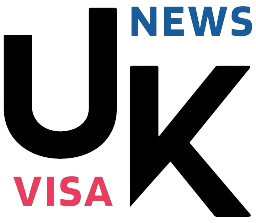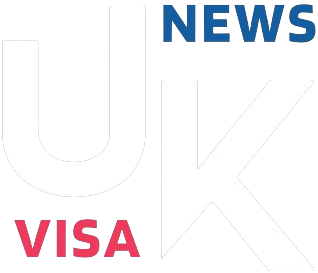By Anna Bregstein – Pupil Immigration Barrister
In Part 1 of this complete guide to the Appendix FM Partner and Family Visa monetary requirement, we delved into the evidential requirements that should be met by candidates counting on Class A employment earnings – that’s the place the person has been working with their employer for six months or extra. In Half 2, we have a look at the House Workplace necessities the place a person has been working with their present employer for lower than 6 months, or has a variable earnings, often known as Class B earnings.
When Does Employment Revenue Fall underneath Class B?
A person might have lately switched jobs and solely have just a few months value of payslips. Alternatively, they could have been incomes a variable earnings, such that the quantity they want to depend on in assist of their utility has been earned for lower than six months. Excessive earners could possibly meet the minimal earnings threshold in lower than six months and want to be thought of underneath Class B as an alternative.
It’s value noting that the place an applicant needs to depend on their very own employment earnings (when they’re within the UK with permission to work) in addition to their associate’s, the employment and non-employment earnings of each events should be calculated underneath Class A or B. The classes can’t be utilized in mixture, as defined within the Home Workplace Steering on the Appendix FM Monetary Requirement (Model 9.0) with examples.
What Is the Monetary Requirement for Employment Revenue Beneath Appendix FM?
The monetary necessities underneath Appendix FM, on the time of writing, are repeated beneath for comfort:
E-LTRP.3.1. The applicant should present specified proof, from the sources listed in paragraph E-LTRP.3.2., of-
(a) a specified gross annual earnings of at least-
(i) £18,600;
(ii) an extra £3,800 for the primary baby; and
(iii) an extra £2,400 for every extra baby;
[…]
E-LTRP.3.2. When figuring out whether or not the monetary requirement in paragraph E-LTRP. 3.1. is met solely the next sources could also be taken into account-
- (a) earnings of the associate from specified employment or self-employment;
- (b) earnings of the applicant from specified employment or self-employment until they’re working illegally;
Word that for entry clearance functions, underneath E-ECP.3.2 solely a associate’s employment earnings, together with specified employment or self-employment abroad, could also be relied on. For instance, a pair making use of from the US to enter the UK can solely depend on the British citizen associate’s (the sponsor’s) wage to fulfill the requirement.
Following a series of significant measures unveiled on 4 December 2023 with the goal of curbing authorized migration numbers to the UK by round 300,000, the federal government introduced a rise to the minimal earnings threshold for household visas. The deliberate incremental will increase have been confirmed in the newest assertion of modifications launched on 14 March 2024. The rise to £29,000 takes impact from 11 April 2024; as such, the determine of ‘£18,600’ seen within the guidelines above will probably be changed with ‘£29,000’. It’s in the end on account of rise to £38,700.
What Are the Monetary Proof Necessities Beneath Class B?
Beneath Class B, paragraph 13(b) of Appendix FM-SE states that people should proof their earnings in two components.
- The gross annual wage because it was on the date of utility
Beneath paragraph 13(b)(i), the gross annual wage of the person on the date the applying is submitted can depend in the direction of the monetary requirement. There is no such thing as a minimal time period so you’ll be able to depend on it upon getting the related proof, like your first payslip.
As defined within the House Workplace’s Steering: on the Appendix FM Monetary Requirement, each salaried and non-salaried employment could be relied upon. Salaried employment means employment paid at a minimal fastened charge (often annual) and is topic often to a contractual minimal variety of hours to be labored. Non-salaried employment consists of that paid at an hourly or different charge, the place the quantity and/or sample of hours labored varies, or an quantity is paid based on the work undertaken. The one distinction between counting on every underneath Class B will probably be in the way in which the gross annual wage is calculated:
- For salaried employment, the extent of gross annual wage will probably be as on the date of utility. This should be evidenced by the most recent payslip or the signed contract of employment (if a payslip doesn’t present this info).
- For non-salaried employment, the extent of gross annual wage relied upon could be no larger than the annual equal of the individual’s common gross month-to-month earnings.
An instance of a Class B utility utilizing salaried earnings may be a person whose associate works within the UK and switched to a brand new job 4 months in the past, the place her gross annual wage is £24,000. Previous to this, she labored at one other job for 8 months the place her wage was £18,000. Due to Class B, she doesn’t want to fret about not having labored at her new job for six months or extra earlier than her associate can apply for go away to stay. By being in salaried employment on the date of the applying with a gross annual wage of £24,000, she is going to meet the monetary requirement underneath the calculation in Half 1 of the Class B utility. She can even meet Half 2 of the Class B calculation, since:
- Precise earnings earned in 8 months at her previous job = (18,000 ÷ 12) x 8 = £12,000
- Precise earnings earned in 4 months at her new job = (£24,000 ÷ 12) x 4 = £8000
So the overall precise earnings earned within the final 12 months is = £12,000 + £8000 = £20,000. Subsequently, though she wouldn’t have met the monetary requirement underneath her previous earnings, now she will be able to.
An instance of the Class B calculation utilizing non-salaried earnings may be a person who lives within the UK and works as a video editor on short-term contracts for varied companies, so their month-to-month earnings varies from month to month. Within the final six months, their month-to-month earnings are as follows: £2500, £1800, £0, £2300, £800, £2200. Their precise employment earnings during the last 12 months is £22,000.
Beneath Half 1 of the Class B evaluation, their present annual employment earnings is:
((£1500 + £1800 + £0 + £2300 + £800 + £1200) ÷ 6) x 12
= (9600 ÷ 6) x 12
= £19,200
As their precise employment earnings during the last 12 months underneath Half 2 of the Class B evaluation is £22,000, each components are met.
If the gross annual earnings doesn’t fairly meet the minimal earnings threshold, it may be mixed with both:
- Non-employment income (Class C) obtained by the applicant’s associate, the applicant, or each collectively within the 12 months previous to the applying, so long as they proceed to personal the related asset (e.g. rental earnings from a home, curiosity from shares).
- Cash savings (Class D) above £16,000 held by the applicant’s associate, applicant or each collectively for a steady interval of 6 months previous to the Software and underneath their management. Word that for functions for entry clearance/preliminary go away to stay and additional go away to stay, this quantity above £16,000 will probably be divided by 2.5 (to mirror the two.5 years or 30 month interval earlier than the person must reapply). On the indefinite go away to stay utility stage, the total quantity above £16,000 could be added to earnings.
- Pension (Class E) – the gross annual earnings from any State (UK or overseas), occupational or personal pension obtained by the applicant or their associate.
For a radical exploration on how one can mix sources of earnings in Appendix FM functions, see our article on Combining Sources of Income to Meet the Family & Partner Visa Financial Requirement.
- The precise quantity of gross annual earnings obtained within the 12 months previous to the applying
In addition to the gross annual wage on the date of the applying, an applicant should exhibit that their precise gross annual earnings obtained within the final 12 months exceeds the minimal earnings threshold. This earnings is calculated utilizing the next sources (paragraph 15(b)):
- The gross earnings from salaried employment within the UK or abroad earned by the individual within the 12 months previous to the date of utility;
- The gross quantity of any specified non-employment earnings (aside from pension earnings) obtained by the individual or their associate within the 12 months previous to the date of utility;
- The gross quantity obtained from a UK or overseas State pension or a personal pension by the individual or their associate within the 12 months previous to the date of utility.
Importantly, while these three sources could be mixed to fulfill the minimal earnings threshold, paragraph 15(b)(iv) offers that money financial savings (Class D) can not be utilized in mixture with these to fulfill the brink.
Do not forget that each these items of proof should be offered, and should moreover meet the desired proof necessities underneath paragraph 2 of Appendix FM-SE.
Class B Specified Proof Necessities
Beneath paragraph A1 of Appendix FM-SE, to fulfill the monetary necessities of Appendix FM, an applicant should fulfill:
(a) The extent of economic requirement relevant to the applying underneath Appendix FM; and
(b) The necessities laid out in Appendix FM and this Appendix as to:
(i) The permitted sources of earnings and financial savings;
(ii) The time durations and permitted combos of sources relevant to every permitted supply relied upon; and
(iii) The proof required for every permitted supply relied upon.
The desired proof necessities when counting on employment earnings are outlined in paragraph 2 of Appendix FM-SE. For an in depth rationalization of those, please confer with Half 1 of this blogpost.
What if the Sponsor Is At the moment Outdoors the UK?
As famous above, in an utility for entry clearance an applicant can not depend on their very own employment earnings to fulfill the monetary necessities underneath paragraph E-ECP.3.2 of Appendix FM, solely on their sponsor’s. The place the sponsor needs to be thought of underneath Class B however is outdoors the UK, they do not should already be in UK employment on the date the applying is submitted. The primary a part of Class B could be proved with a confirmed supply of salaried or non-salaried employment beginning inside three months of their return to the UK.
The desired proof necessities underneath paragraph 4 of Appendix FM-SE learn as follows:
- In respect of a job supply within the UK (for an applicant’s associate or mum or dad’s associate returning to salaried employment within the UK at paragraphs E-ECP.3.2.(a) and E-ECC.2.2.(a) of Appendix FM) a letter from the employer should be offered:
(a) confirming the job supply, the gross annual wage and the beginning date of the employment which should be inside 3 months of the applicant’s associate’s return to the UK; or
(b) enclosing a signed contract of employment, which will need to have a beginning date inside 3 months of the applicant’s associate’s return to the UK.
If the employment is salaried, it will need to have a confirmed gross annual wage. If non-salaried, the gross annual earnings from that employment will as an alternative be calculated primarily based on the speed or quantity of pay, and the usual or core hours of labor, set out within the doc(s) from the employer offered underneath paragraph 4 (paragraph 18(g)).
This gross annual earnings might once more be mixed with non-employment earnings (Class C), money financial savings (Class D) and pension earnings (Class E).
The second a part of Class B – the precise earnings obtained within the final 12 months – will probably be calculated in the identical method as above by combining any abroad earnings from salaried or non-salaried employment, non-employment earnings and pension earnings, however not money financial savings.
For instance, the applicant’s associate is a British citizen who left his job in India 1 month in the past to arrange for his transfer to the UK along with his associate. He’s due to this fact not employed on the time of the applying. Nonetheless, he has a confirmed supply of employment beginning inside 5 weeks of his supposed date of return to the UK with an annual beginning wage of £35,000. Half 1 of the Class B evaluation is due to this fact met.
Moreover, he obtained £30,000 from his employment within the 12 months previous to the applying. Half 2 of the Class B calculation is due to this fact met.
Contact Our Immigration Barristers
For extra info on the monetary requirement underneath the Immigration Guidelines, or to debate an utility underneath Appendix FM of the Immigration Guidelines then please contact our specialist immigration barristers on 0203 617 9173 or by way of the enquiry kind beneath.








